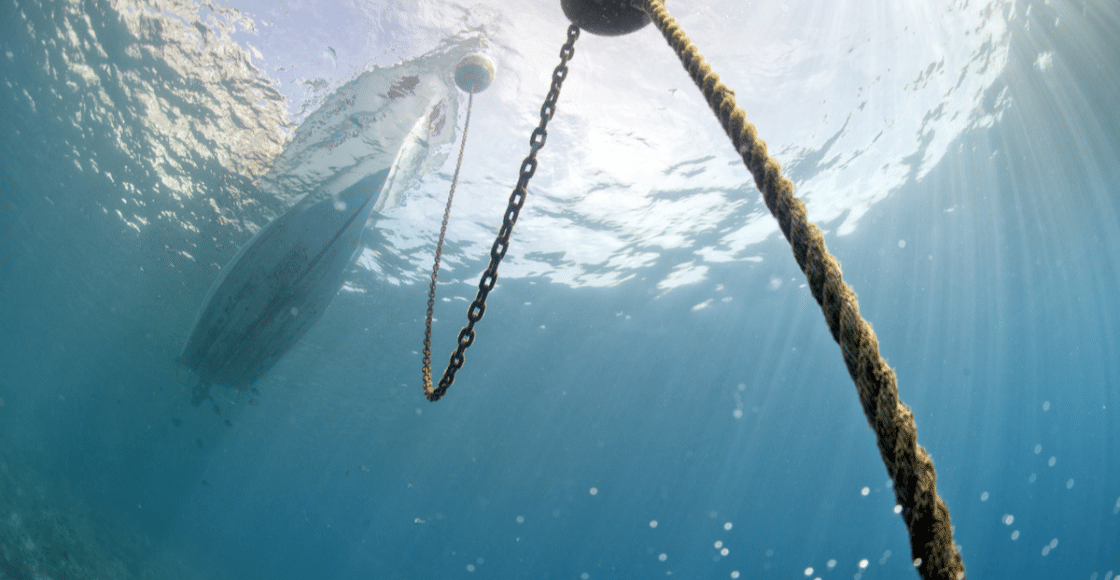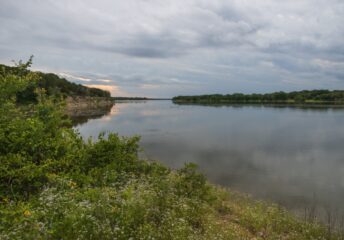Boat Anchor Types: A Complete Guide
Last Updated on January 11, 2024 by Boatsetter Team
To live out your boating dreams, it is important to ensure your safety and ensure that you have the best anchor. Anchors are essential for any boating activity and crucial for any experienced or amateur boater. By mastering the fundamentals of safe anchoring, you will safeguard your boating experiences from any accidents or anxiety. This guide will help you choose your ultimate anchor and provide tips for choosing which boat anchor is right for you. After choosing the anchor that is your right fit, you will be able to have smooth sails ahead and enjoy a stress-free time with friends and family.
Knowing the Ropes
Knowing your whole anchor system will be essential in shopping for an anchor. The anchor system is comprised of the chain, rope, shackle, and deck cleats along with the anchor. Each of these items must deliver the quality, performance, and strength that you need to anchor your boat.
Your Anchor Line: The Anchor Rode
Using a short anchor chain and three-strand nylon line will greatly reduce loads of shocks on your boat and the anchor system. Nylon is very elastic and helps reduce shockwaves or damage to the boat. Avoid anchor rodes that use all chains because they will lack the shock-absorbing qualities of nylon rope when the winds increase. The chain protects the line from chafing on the seabed.
If regularly anchoring in 25-ft of water or less, use 6 ft of chain. In greater depths, use an additional 6 ft for every 25-ft of water depth.
Holding Power
You have to make sure that the anchor you choose will support the boat you are operating and will fit the conditions of the environment you will be boating in. Choosing the right anchor for the type of boat you operate and the type of wind conditions you will be encountering is essential for boating safely. You must be certain that your anchor will be able to hold your boat. Here are three different types of anchors and rules of thumb for the durability of an boat anchor.
- Lunch Hook: This anchor should hold a boat in a 15-knot breeze.
- Working Anchor: This anchor should hold up to 30-knots of wind.
- Storm Anchor: This anchor is for winds up to 42-knots of wind.
It is important to remember that as a general rule, when the wind speed doubles, the holding requirement quadruples. Be mindful of holding power requirements for different wind speeds, and use this information as a rule of thumb!
Know Your Scope
The scope is the length of the anchor line in relation to the distance of your boat’s deck to the bottom of the sea. Understanding scope is critical in anchoring and boating safely. The scope’s ratio should at least be 5:1, length to distance. When the scope increases, the anchor’s horizontal pull will also increase, which can help dig the anchor deeper into the sea bottom. When the scope decreases, the anchor’s pull will become more vertical. This can cause your boat to disturb and dislodge your anchor, especially at the height of a wave or during high tide.
If the scope’s ratio is less than 3:1, you are at risk of giving away a significant amount of control. Remember to set your anchor at a 5:1 initially. Afterward, you may shorten the scope as needed.
Power Setting the Anchor
To ensure that your anchor is thoroughly buried into the sea bottom, it is best to “Power Set” it. When you start setting the anchor into place, begin to lower it slowly into the water. As the anchor begins to descend deeper into the bottom, slowly begin to increase your anchor load with your engine to make sure it is securely buried. Remember that if you back off at any speed, you might not give the anchor a chance to bury itself into the sea bottom and ensure anchoring. You can follow and mimic the force of the wind by using the engine’s thrust to set the anchor to a predetermined load. By matching your boat’s total maximum horsepower and hull type, you can determine to what extent your boat can “Power Set” your anchor.
Anchoring in Soft Mud Bottoms
If you are anchoring in a soft mud bottom, this will greatly reduce your holding power compared to harder soils or sands. If you encounter a problem setting your anchor in this environment, then try setting the anchor at a very short scope at first. This initial scope could be a 2:1 ratio. When the anchor begins to dig in and set, slowly increase the scope to a greater ratio. An example of this could be a 5:1 ratio. Then, try to power set the anchor.
Special “mud palms” can be installed on your anchor, and it is recommended that you permanently install these “mud palms” to set your anchor in any type of bottom.
Retrieving the Anchor
Start by slowly moving the boat into a position that directly hovers over the anchor, pulling in the line as you go. When you are directly above it, shorten the line on a cleat and slowly power backward to pull the anchor out of the bottom. Do not power forward since this will require way more energy and put heavy loads on the anchor and support system.
A Summary of Anchor Types: Choosing the Right Style for You!
Claw Anchors
The Claw Anchor is one of the most popular anchors among boaters in North America. This anchor is a dynamic anchor that performs well in many sea bottoms, including mud, sand, rock, and coral. It has more trouble digging into harder surfaces like clay and dense grass. It has a three-claw design and sets and resets easier than other anchors. On the other hand, it has a lower holding power per pound than other anchors.
The Wing and Plow Anchor
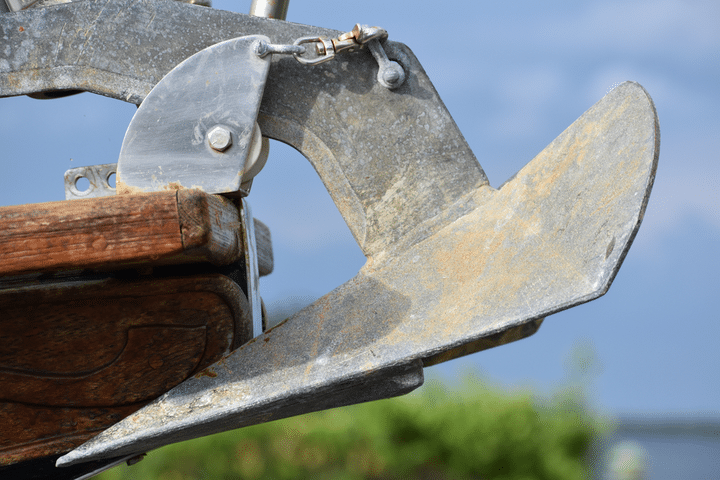
The Wing Anchor is a hinged anchor. The Plow Anchor also has a hinged design, but the greatest difference between the Plow and Wing is that the Wing is a one-piece design. The Plow Anchor is one of the most popular anchors among bluewater cruisers despite having low holding power. However, the hinged design makes it more responsive and durable to environmental elements.
Delta Anchor
This anchor is an excellent choice for anchors that are going to be used repeatedly during stormy conditions. The self-righting design allows it to set quickly and the ballasted tip ensures that it stays in place. The Delta anchor can be said to be the most popular anchors among boats today and is the standard for boat manufacturers. Regardless of whether you want a boat anchor for a sailboat or for a pontoon boat, be sure to choose this one.
The Fluke Anchor
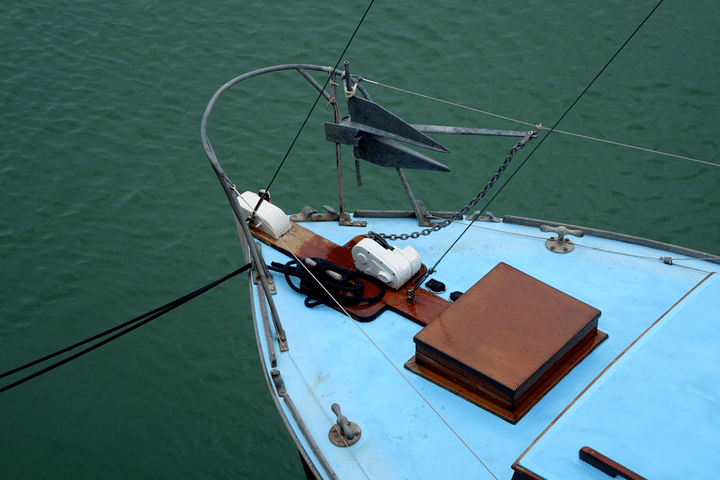
The Fluke Anchor is also a popular choice among boaters. The Fluke Anchor is constructed of lightweight, high-strength aluminum. The Fluke Anchor performs well in mud and sand, perhaps better than any other style. On the other hand, if not in mud or sand, The Fluke Anchor is not the best performer.
The Plow Anchor with Roll Bar
There are several Plow Anchors with roll bars that are essentially variations on the plow style anchor. The Plow Anchors with roll bars are a lot sharper than traditional Plow styles. Since the roll bars create a distinct sharpness, they can penetrate the sea bottom much easier than other anchor styles. The roll bar also helps the anchor orient itself when setting. The only downside is that these anchors can be very expensive and difficult to store.
Grapnel and Small Anchors
The Grapnel Anchor is used for small boats such as Kayaks, Canoes, etc. It is a favorite among fishers and is compact and easy to store. Grapnel’s hook onto another object for holding power yields immense holding power but can create difficulty retrieving the anchor.
Mushroom Anchors
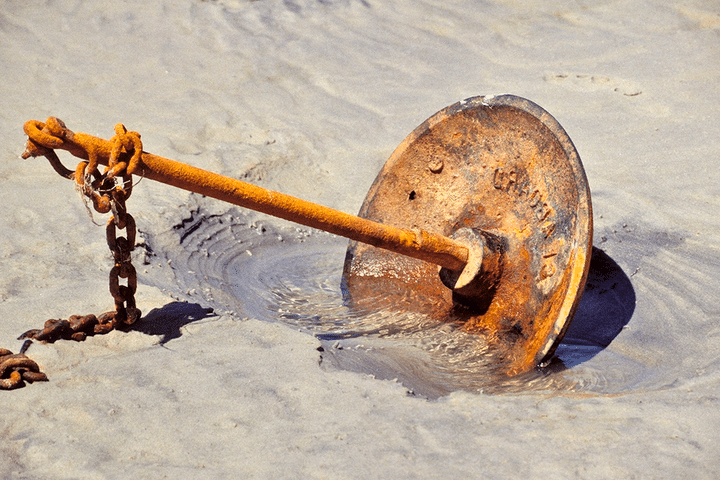
Mushroom Anchors are often used for mooring buoys permanently because of their extreme holding power that can often hold ten times its actual weight. Silt from the sea bottom builds up over these anchors and results in this extreme holding power. However, this anchor type is not useful in temporary anchoring situations and makes more sense for permanent mooring. The exception is smaller versions of the Mushroom that can be used for small boats and anchoring while fishing.
Anchor Materials
The most common anchor materials are mild steel, high-tensile steel, stainless steel, and aluminum. Most anchors are mild/high-tensile steel. High-tensile steel is about twice as strong as mild steel, but that is not to say that it has a higher holding power, just that it is stronger. These are not corrosion resistant and need to be galvanized to prevent rust. All anchors need to be galvanized and can be pre-galvanized to prevent erosion.
Once you identify your needs and what fits best for you and your boat, you will be able to safely anchor at any desired destination!

Boatsetter empowers people to explore with confidence by showing them a world of possibility on the water. Rent a boat, list your boat, or become a Boatsetter captain today.
